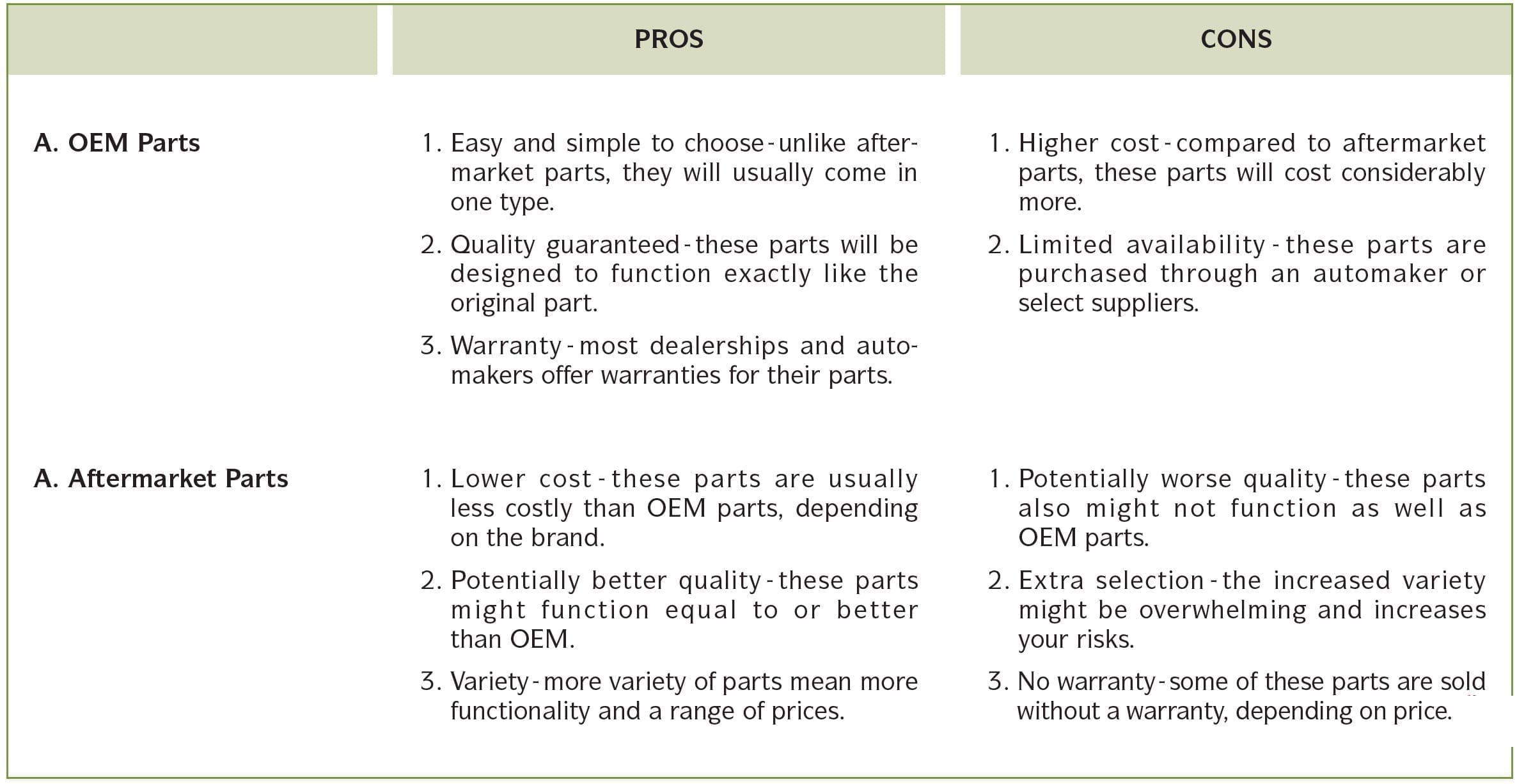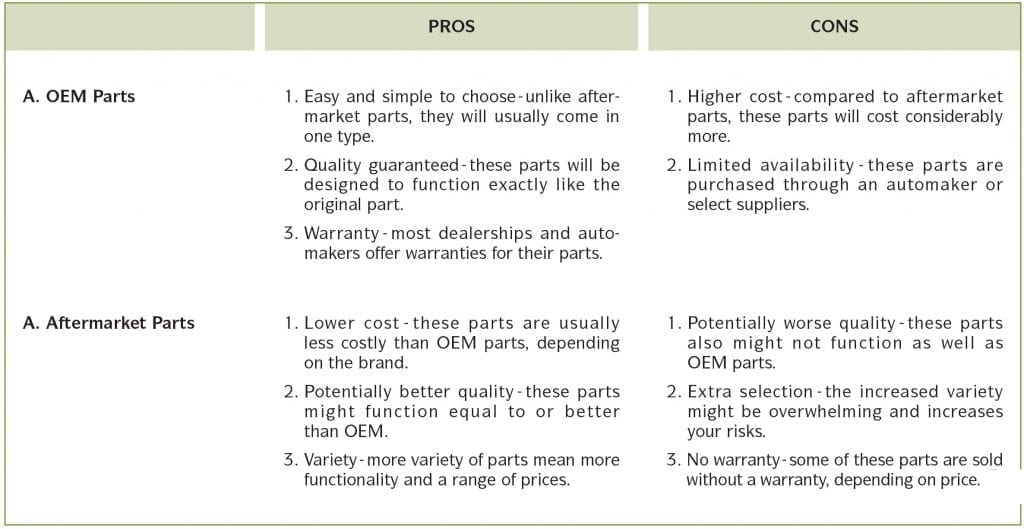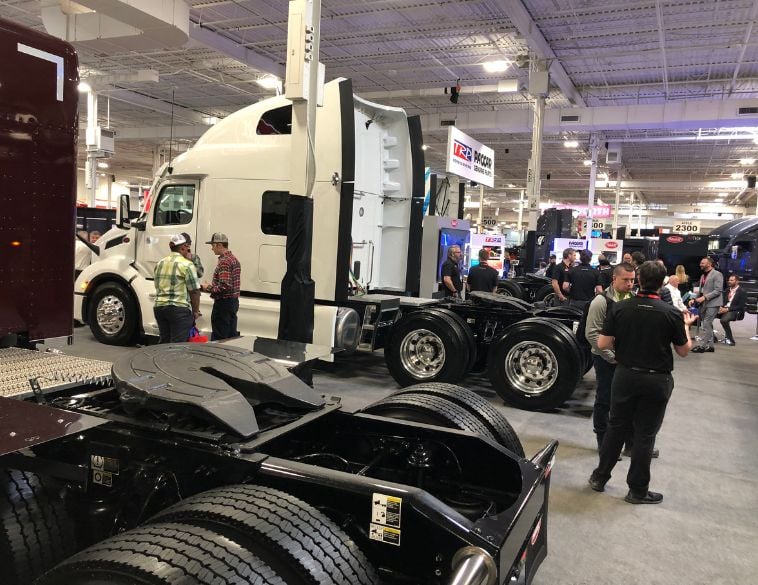While aftermarket parts may be cheaper to buy, fleets need to keep in mind the real cost of non-OEM parts.
While saving on the cost of parts can help a fleet limit expenses, there can be a cost to making this choice. Fleet managers should consider the pros and cons when deciding whether to repair vehicles with either OEM or aftermarket parts. The bottom line is that this choice can impact the resale value of a vehicle, since buyers may decide that a car with aftermarket parts is worth less than one with OEM parts.
Gerry Corcoran, National Director, Commercial Remarketing at Jim Pattinson Lease says that aftermarket parts can adversely affect the value of high-end, late-model cars, while other vehicles may not be affected as much.
The quality of the aftermarket parts also plays into the equation. Corcoran explains, “Some aftermarket suppliers only make money if they can make the metal thinner. The fit isn’t as good, the design is not as tight, and that can create a problem.” Meanwhile, OEMs deliver consistency.
He adds, though, that the quality of the shop used by fleets, as well as the quality of repairs carried out on vehicles are more important than where the parts came from. “It’s the quality of installation that matters,” he says.
Two sides of the same coin
That said, there is a place for aftermarket parts in the fleet world, and whether or not to choose OEM is a matter that each individual fleet must decide. To shed light on the matter, Marc Moncion, Head of Safety, Compliance & Regulatory Affairs at Fleet Complete offers this chart to help fleet managers better understand the advantages and disadvantages of OEM and aftermarket parts.
Change is the only constant… for all cars
For proper maintenance and repairs, Moncion lists a few parts that need to be replaced frequently, in order of importance:
- The oil filter should be replaced every time the oil is changed;
- The windscreen wiper blades tend to break down after two years or so;
- The air filter should be changed every three or four years, or about 48,000 to 80,000 km;
- The brake pads need to be replaced every three to five years, or 48,000km to 110,000km;
- The battery usually has a lifespan of four or five years, but it is affected by hot climates and poor motoring practices;
- Headlights, brake lights, and tires are the most common parts that need replacing, with a five- to seven-year shelf life depending on variable factors.
“What is key is to follow the preventative maintenance intervals and replace the above parts before they break down when you are in transit, of before they cause damage to other parts,” states Moncion. “But as long as I trust my auto technician, I have confidence that he will advise me about the best options when it comes to OEM versus aftermarket for the particular repair of a specific part.”




